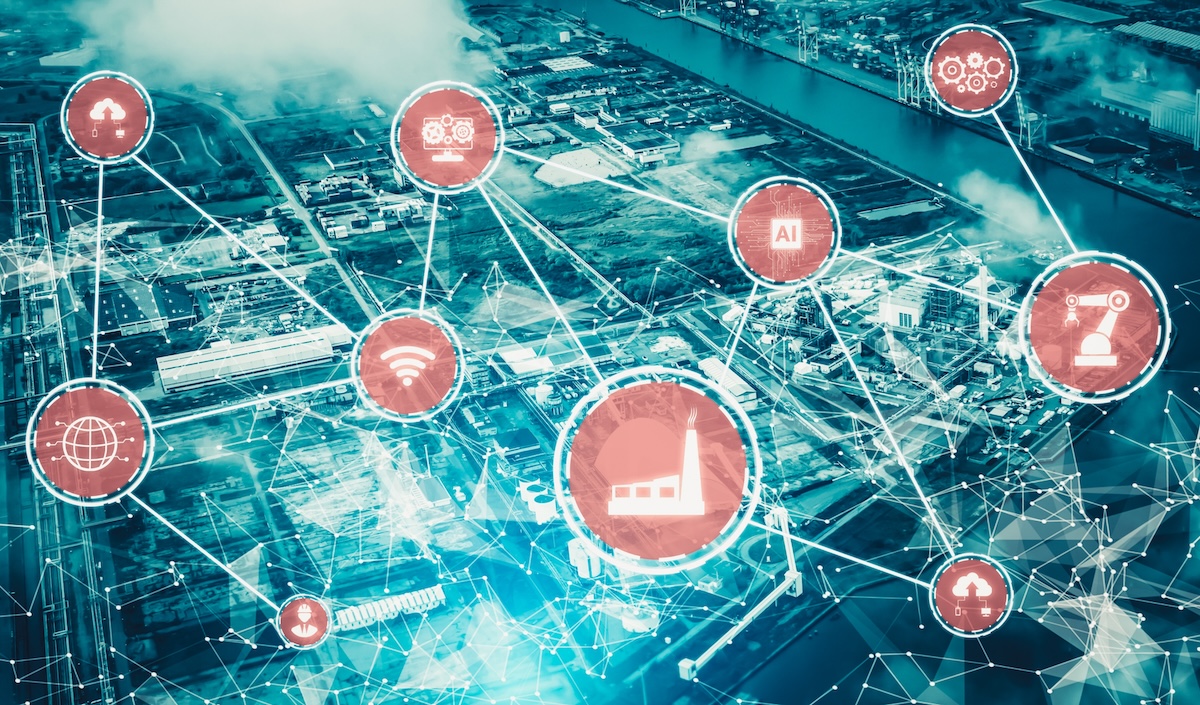IoT project planning: 4 challenges you may meet
Companies continue to have questions about the IoT and where they should focus their efforts. Leaders know that by connecting what has up until now been unconnected, they will have access to data, information, and insights that will lead to smarter businesses and better experiences for their customers.
However, while these companies recognize that they need to invest in IoT solutions to drive digital transformation without any risks, they also understand that it’s very easy to waste money, time, and other resources. Gartner reports that 75 percent of IoT projects will take twice as long as planned to implement and many will fail before they even launch.
So, what should leaders do in terms of devising and implementing effective IoT strategies that mitigate risk, transform operations, and achieve successful outcomes?
IoT drives value
IoT is all about driving value, and doing so in faster, better, and more accurate ways. Enabling access to data is key, but it’s not just about getting more information. It’s about leveraging that information to create a more insightful environment. It’s about taking action based on those insights. It’s about changing business models and disrupting traditional industries, and even adjacent industries. In short, the potential for IoT to drive business transformation is undeniable—for companies that are able to see the big picture.
In most cases, though, the conversation shouldn’t even start with IoT. When I talk with the management of large companies, they don’t say, “I want an IoT solution.” Instead, they say, “I want to get better insights into how our production lines are performing and identify equipment that needs to be maintained before outages occur.” Or they say, “I want to implement new QA processes to improve quality while reducing defects.” Or they want to deliver a better customer experience, whether it’s shorter delivery times, faster transaction processing, or fewer service interruptions.
In other words, they need help solving very specific business problems. The HPE Pointnext team has helped translate such requests into real-world business solutions. Increasingly, IoT is enabling these solutions. Examples abound, from an auto parts manufacturer using an IoT-enabled QA system to boost accuracy and respond to problems more quickly to a refinery of the future that is leveraging IoT to improve operations and create a new data-as-a-service business.
The first three challenges: Time to action, technical debt, and data choices
The promise of IoT must be tempered with the complex business and technical realities. When a company decides to move forward with IoT, there are several technical challenges stakeholders will need to contend with.
The first is time to action, or time to insight. The company must be agile and quickly adapt to new technologies. How can technical solutions be assembled seamlessly, quickly, and securely, so that the company can actually get these insights and take action?
The second is technical debt. This means the organization will need to deal with its existing technical foundation to enable that digital transformation and drive positive business outcomes. While many elements will be modernized, some parts will never be transformed. As it sorts through its technical debt, the team will need to answer some tough questions:
- What legacy machinery or applications should be kept?
- What processes, data, and architectures need to be transformed?
- How will IoT and other advanced technologies be absorbed?
Consider a company seeking to integrate new IoT solutions with existing ERP, CRM, or other back-end systems. Some of the technical decisions will be based on legacy platforms that may have been selected and implemented decades earlier. There’s a great deal of organizational wisdom in legacy platforms and the real value stored in those information systems.
To drive that engine of innovation, it’s a never-ending loop of learning, seeding, and adapting to digital, all the while leveraging foundational capabilities and legacy technologies.
There’s a third challenge to think through during the planning stages, data choices, which comes down to this: If it’s possible for an organization to connect the unconnected and effectively digitize anything, how should it decide what to digitize?
There is an opportunity to enable huge amounts of data, at massive scales, which can potentially provide insights with enormous business value. But the risk is connecting the wrong things and then making the wrong decisions based on the flawed inputs. This not only represents a waste of money but can potentially lead companies to make decisions that end up causing irreparable harm to the business.
The fourth challenge: How to bring IoT stakeholders together
I’ve hinted at some of the reasons why certain IoT projects fail. Companies are not agile enough and get stuck in proof-of-concept quagmires that lead them further astray from the actual business. Organizations are unable to work through their technical renovation needs and fall short in leveraging legacy systems. Teams make poor decisions when it comes to data and end up generating insights that can send them down the wrong path.
But there is another reason why a lot of these IoT solutions fail. Think of it as a fourth challenge that relates to the management dynamic: People are not coming together. Whether it’s a siloed organization where collaboration isn’t effective or a divide between operational groups and the technical team, a fundamental lack of alignment between IT and the business exists.
Historically, traditional business models had the executive team setting requirements, which would flow through the operating model into infrastructure. Someone would tell IT to go build it, and IT did as it was told.
As we have moved to a much more digitally enabled world, where technology is ever-present, there’s a great deal of innovation bubbling up from all areas of the business, including IT.
It’s encouraging to have innovative ideas coming from across the organization. But there’s a huge risk of misalignment. The business is setting requirements on one side while lines of business and IT are exposing innovation from another, and they’re not quite meeting in the middle.
While there is no easy fix here, several best practices can help align IT and business teams embarking on an IoT project:
- Decision-makers must come together in the same room and work as one to apply the right business lens and value proposition onto the technology choices being made.
- Consider desired customer outcomes and experiences based on the new technology solutions.
- Take a big-picture view—it’s not just about the use cases at hand, but also an opportunity to transform the business and leapfrog the competition.
- Turn to trusted partners that understand the challenges of designing, implementing, securing, and scaling distributed IoT architectures. More about the Nine challenges of Industry 4.0
When it comes to good management practices, an example that springs to mind is Texmark, the refinery of the future mentioned earlier. The petrochemicals manufacturer didn’t unilaterally decide to implement IoT at the plant and force staff to get on board, which could have resulted in failure. Instead, leaders got everyone into the same room at the exploratory, visioning, and planning stages to see what was possible and discuss how the technology could improve operations and deliver better business outcomes. People were excited to participate and share their insights and collaboratively plan how to integrate sensor-enabled pumps and a scalable IoT architecture. Texmark now has several IoT initiatives moving forward. One of them is about the Refinery of the Future type of projects: the benefits, opportunities, and challenges in implementing IIoT.
For businesses that are looking to an IoT-enhanced future, the time to begin the journey is now. Putting IoT into the fabric of the business will lead to new insights, a redefinition of customer experiences, and ultimately, the ability to survive and prosper.
IoT project planning: Lessons for leaders
- While IoT can drive digital transformation, there is a real risk of wasted time, effort, and outright failure. Take time to understand the challenges associated with time to action/insight, technical renovation needs, and data choices.
- Don’t do IoT for the sake of IoT. Rather, the discussion should start with a focus on solving business problems and enabling digital transformation.
- Misalignment between IT and the business can lead to failure. Getting stakeholders in the same room and thinking about customer outcomes and the potential for business transformation can help, but also consider leveraging the insights of partners that have deep IoT experience.
Originally this article was published here.
 This article was written by Yanick Pouffary and Jordan Whitmarsh. Yanick is is a distinguished technologist and serves as chief technologist for IoT and edge services within HPE Pointnext, focusing on digital transformation, innovation and emerging trends.
This article was written by Yanick Pouffary and Jordan Whitmarsh. Yanick is is a distinguished technologist and serves as chief technologist for IoT and edge services within HPE Pointnext, focusing on digital transformation, innovation and emerging trends.
Jordan is part of the global team that defines the strategic direction for HPE Pointnext’s consulting services portfolio for Workplace and Mobility. He is an evangelist for the role that technology plays in the building of workplace environments that inspire and engage employees while making them more effective.
Note: HPE Edgeline Converged Edge Systems is powered by Intel® Xeon®.
Managing Highly Contextualized Data for IIoT
Have you ever wondered how industries using smart devices handle tons of unique data loading on their server? High cardinality data allows for detailed tracking and monitoring of each sensor, machine, and device in real-time. Finding patterns and irregularities in this
Evolving Standards and Architectures for IIoT Data
The increasing volume and diversity of IIoT data present significant challenges for interoperability and integration. While standards are crucial for establishing a common language for data exchange, they alone cannot solve all the challenges. This article will explore how standards
November 2024 Industrial IoT & ICS Cybersecurity Events
As November 2024 approaches, a series of highly anticipated Industrial IoT and ICS Cybersecurity events are set to take place worldwide. From conferences focused on cybersecurity, digital transformation, and industrial automation to innovation summits shaping the future of technology, these



